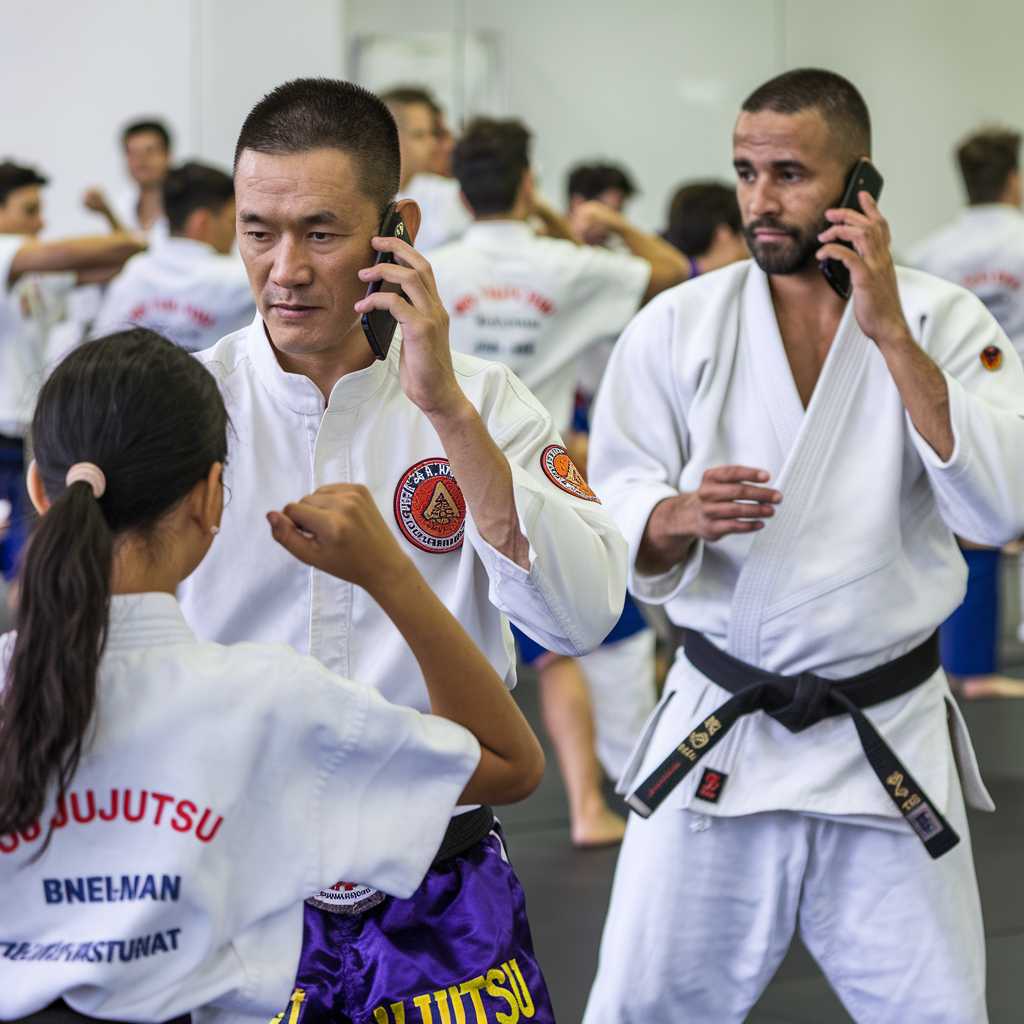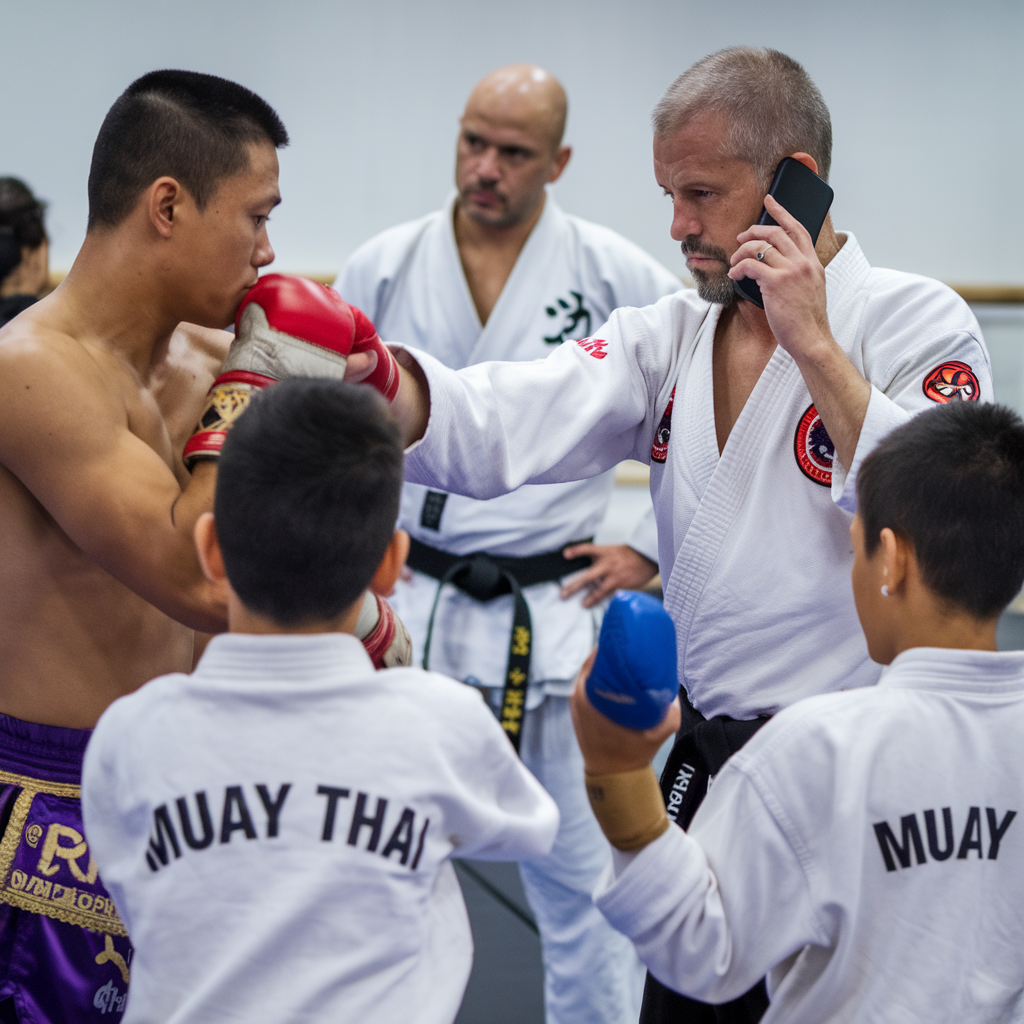
Introduction
In the diverse and dynamic world of martial arts, few styles hold as much respect and effectiveness as Muay Thai and Brazilian Jiu-Jitsu (BJJ). Each discipline is powerful in its own right—Muay Thai is known for its striking ferocity, while Jiu-Jitsu specializes in ground control and submissions. Together, they offer a comprehensive approach to combat, blending the precision of striking with the art of grappling.
For modern martial artists and self-defense enthusiasts, mastering both arts provides an unparalleled advantage. This article dives into the unique philosophies, techniques, and benefits of Muay Thai and Jiu-Jitsu—exploring how the “Eight Limbs” of Muay Thai and the “Infinite Holds” of Jiu-Jitsu create a formidable combination.
The Art of Eight Limbs: Understanding Muay Thai
Muay Thai, also known as the “Art of Eight Limbs,” is a striking martial art originating from Thailand. It earns its name from the use of eight points of contact—fists, elbows, knees, and shins—making it one of the most versatile and powerful stand-up fighting systems.
Key Elements of Muay Thai
- Punches (Mat): Straight punches, hooks, and uppercuts, designed to deliver quick and powerful strikes.
- Kicks (Te): Emphasis on the roundhouse kick, which generates devastating power through the hips.
- Elbows (Sok): Short-range weapons ideal for cutting and damaging an opponent.
- Knees (Khao): Powerful close-range strikes, especially effective in the clinch position.
Clinch Work: The Hidden Power of Muay Thai
One defining characteristic of Muay Thai is the clinch, where fighters control their opponent’s posture while delivering knees and elbows. This aspect of Muay Thai blends seamlessly with Jiu-Jitsu’s focus on grips and positional dominance, making the transition between the two arts smooth for hybrid fighters.
Benefits of Training Muay Thai
- Striking Efficiency: Muay Thai’s direct and practical strikes focus on maximum impact.
- Physical Conditioning: Training enhances cardiovascular endurance, strength, and flexibility.
- Self-Defense Application: Effective in real-world situations due to its straightforward techniques.
The Art of Infinite Holds: Mastering Brazilian Jiu-Jitsu
Brazilian Jiu-Jitsu (BJJ) is a grappling art that focuses on controlling and submitting an opponent through joint locks and chokes. Developed from traditional Japanese Jiu-Jitsu and Judo, BJJ emphasizes using leverage and technique rather than strength.
Key Techniques of Jiu-Jitsu
- Takedowns and Throws: Methods to bring an opponent to the ground where BJJ practitioners excel.
- Guard Positions: Defensive positions on the ground that allow for control and submissions.
- Submissions: Techniques such as armbars, triangles, and rear-naked chokes used to force an opponent to surrender.
- Escapes and Reversals: Methods to escape disadvantageous positions and regain control.
The Philosophy of Jiu-Jitsu
At its core, Jiu-Jitsu believes in the principle that a smaller, weaker individual can defeat a larger, stronger opponent through superior technique. This mindset fosters patience, adaptability, and problem-solving under pressure.
Benefits of Training Jiu-Jitsu
- Ground Control: Mastery over an opponent once the fight goes to the ground.
- Practical Self-Defense: Effective for real-life scenarios where grappling is unavoidable.
- Mental Resilience: Encourages patience and strategic thinking during high-pressure situations.
Striking vs. Grappling: The Dynamic Contrast
Muay Thai and Jiu-Jitsu differ significantly in their approach to combat, but together they cover all phases of a fight.
| Aspect | Muay Thai (Striking) | Jiu-Jitsu (Grappling) |
| Range | Long to mid-range (standing combat) | Close-range and ground-based |
| Primary Goal | Inflict damage and control through strikes | Control, submit, or neutralize opponents |
| Tools | Fists, elbows, knees, shins | Grips, chokes, joint locks |
| Training Focus | Striking precision and endurance | Technique, leverage, and positional control |
| Defense Strategy | Blocking, parrying, and clinch control | Escapes, reversals, and submissions |
These contrasting styles create a holistic martial artist—capable of striking with power and controlling the fight on the ground.
Why Modern Warriors Train Both Arts
Modern combat sports like Mixed Martial Arts (MMA) have demonstrated the value of combining Muay Thai and Jiu-Jitsu. Fighters who neglect one area are at a significant disadvantage. Here are some key reasons why integrating both arts is beneficial:
1. Complete Combat Readiness
A Muay Thai striker trained in Jiu-Jitsu is no longer vulnerable if the fight goes to the ground. Conversely, a Jiu-Jitsu practitioner with Muay Thai skills can effectively defend against strikes.
2. Self-Defense Versatility
In real-life confrontations, being able to strike, clinch, or grapple gives you the tools to handle diverse situations.
3. Mental and Physical Growth
Training both arts enhances not only physical capabilities but also mental discipline—teaching you to remain calm, think critically, and push through adversity.
How to Combine Muay Thai and Jiu-Jitsu in Training

- Cross-Train Regularly: Dedicate specific days to each art while maintaining a balance between striking and grappling.
- Practice Transitions: Focus on seamlessly moving from Muay Thai’s clinch into Jiu-Jitsu takedowns.
- Integrate Sparring: Engage in sparring sessions that incorporate both striking and grappling to simulate real combat.
- Refine Defense: Learn to defend against takedowns in Muay Thai and avoid strikes when applying Jiu-Jitsu.
The Evolution of Martial Arts: Muay Thai and Jiu-Jitsu in MMA
The emergence of Mixed Martial Arts has proven that no single style is enough on its own. Fighters like Anderson Silva and Charles Oliveira have combined Muay Thai’s striking precision with Jiu-Jitsu’s grappling prowess to dominate the highest levels of competition.
This evolution showcases the need for versatility and adaptability—both critical traits in any arena, whether for competition, self-defense, or personal development.
Becoming a Modern Warrior: The Path Forward
If you’re looking to become a well-rounded martial artist or simply improve your self-defense capabilities, combining Muay Thai and Jiu-Jitsu is a powerful path.
- Begin with One Discipline: Build a strong foundation in either Muay Thai or Jiu-Jitsu before adding the other.
- Stay Consistent: Progress comes with time and dedication to both arts.
- Focus on Application: Train with the mindset of applying your skills in real-life scenarios.
Conclusion
Muay Thai and Jiu-Jitsu represent two of the most effective martial arts in the world. The “Eight Limbs” of Muay Thai provide striking ferocity, while the “Infinite Holds” of Jiu-Jitsu offer strategic ground control. Together, they forge modern warriors—capable, adaptable, and ready for any challenge.
By embracing both arts, you unlock not only the secrets of combat but also the physical and mental resilience required to excel in life. Whether you’re stepping into the ring or facing the uncertainties of everyday life, the combined power of Muay Thai and Jiu-Jitsu offers you the ultimate edge.

